Wild Turkey Habitat Distribution in the Delta
Principal Investigators
Dr. Guiming Wang
Mississippi State University Department of Wildlife and Fisheries
Dr. Jerrold Belant
Mississippi State University Department of Wildlife and Fisheries
Dave Godwin
Mississippi Department of Wildlife, Fisheries, and Parks
Graduate Research Assistant
Kyle Marable - Mississippi State University Department of Wildlife and Fisheries
The Eastern Wild Turkey was once distributed across the entire Mississippi Delta region. The conversion of the landscape from forest to a near 100% agricultural system eliminated much of the turkey habitat and populations. Wild turkeys prefer large tracts of mature forests (bottomland and upland hardwoods, pine-hardwood, pine) mixed with open areas (pastures, hayfields) that provide variety for feeding and reproduction. Remnant populations (or reestablished populations) remain in the batture areas and select National Forests; however, the majority of the Delta currently lacks birds.
Reforestation within the Delta region of the Mississippi River has been an issue of concern for many years. Federal programs, such as the Wetland Reserve Program (WRP) and Conservation Reserve Program (CRP) have converted numerous acres back into forest habitat. Over 150,000 acres in Mississippi have been placed in WRP alone. Many of these reforested lands are reaching an age that may provide habitat for the wild turkey. Research needs to be conducted to determine at what stage and configuration in the landscape these reforestation lands will support viable populations of birds.
"Traditional" turkey habitat in Mississippi consists of large blocks of mature bottomlands with lesser quantities of open grassland interspersed. Other areas of the country have birds thriving in more agricultural settings with small woodlots. This research will provide insight into areas of the Delta region that currently support and potentially might support wild turkey populations. It will also evaluate the importance of Federal reforestation programs on habitat improvement for wildlife populations. Increasing wild turkey distribution in the Delta will provide sportsmen additional opportunities that currently do not exist in that region.
Full Report on Research Accomplishments to Date
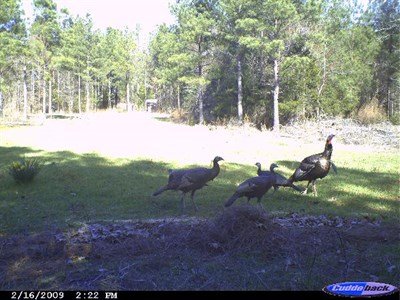
Turkeys on bait in front of a rocket net.
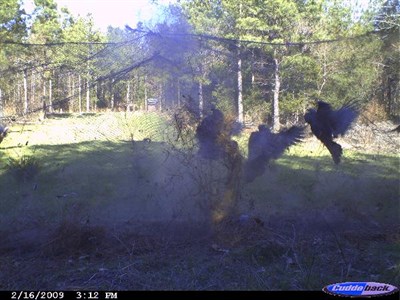
Once the turkeys are positioned in front of the net, biologists in a nearby blind shoot the rockets and the net is propelled over the turkeys.
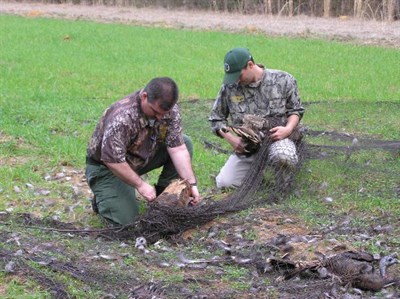
Biologists Ricky Flynt and Adam Butler quickly remove captured hens from the net. Once the hens are removed, they are loaded into specially-made turkey transport boxes and delivered to our Delta study areas.
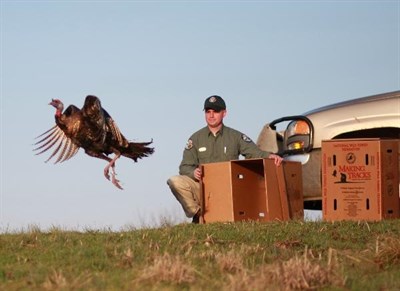
Biologist Scott Edwards releases a gobbler fitted with a radio transmitter at a study site in Coahoma County.
![]()
Biologist Adam Butler tracks turkeys at a study site in Quitman County. Each released turkey is fitted with a unique radio transmitter that allows researchers to determine its location.
Funding for this project was provided by:
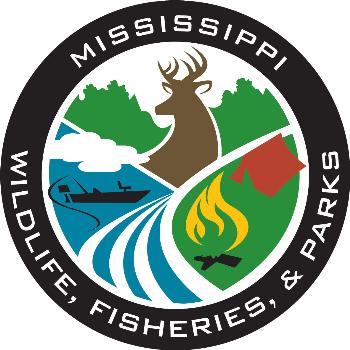 |
 |
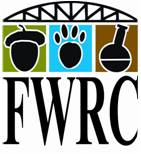 |
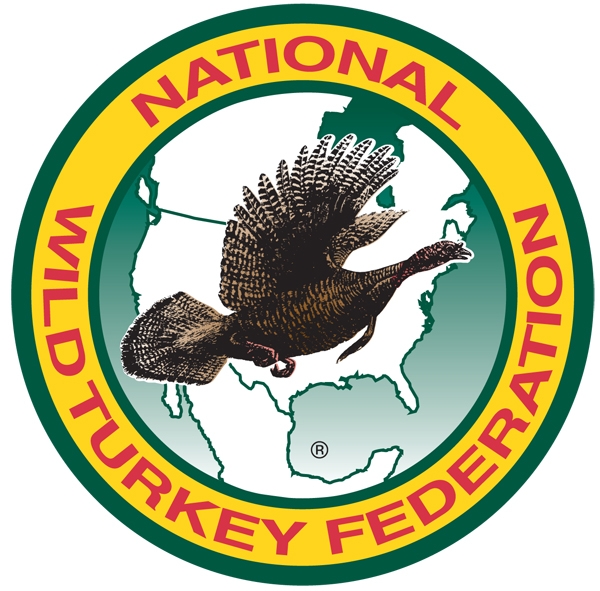 |
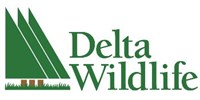 |
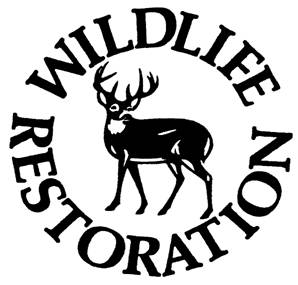 |









